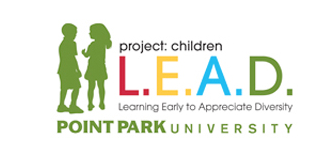Lesson 2 Using Words to Work Things Out Lesson Series

Curriculum | Resources | Workshops | Activities | About Us
Using Words to Work Things Out
Teachers: Sara Conway, Barbara Geary, Joy Evans
Project Children L.E.A.D. Director: Dr. Vincenne Revilla Beltran
Subject Area: Diversity
Grade level: Early Pre-School (Ages 2-3)
Length of Lesson: 20 minutes
Learning Goals Based on the Pennsylvania Academic Standards and High Scope Key Experiences
Key Experiences
-
Sense of Self
-
Social Relations
-
Communication and Language
-
Movement
Standards
-
1.35 Teachers identify the purpose of the child's behavior and how the child's needs are met through their use of challenging behavior. They teach social, communication, and emotional regulation skills the child can use in place of challenging behaviors.
-
1.40 Teachers help children manage their behavior by guiding and supporting children to persist when frustrated, play cooperatively with other children, use language to communicate needs, learn turn taking, gain control of physical impulse, express negative emotions in ways that do not harm others or themselves, use problem solving techniques, learn about self and others.
-
2.15 Curriculum guides teachers to help children learn to recognize and name their own and other's feelings
-
2.16 Children have varied opportunities to learn the skills needed to regulate their emotions, behavior, and attention.
-
2.67 Infants and toddlers have opportunities to express themselves creatively through freely moving to music and, as toddlers, through engaging in pretend or imaginative play.
-
2.78 Children are provided varied opportunities to learn new concepts and vocabulary related to art, music, drama, and dance.
-
2.87 Children are provided opportunities and materials that increase their awareness of safety rules in the classroom, home and community.
Objectives
-
The children will be able to better solve problems encountered in exploration and play.
-
The children will learn a positive way to express their emotions, and begin to show empathy toward the feelings and needs of others.
-
The children will be able to communicate with teachers and peers ways in which we use our hands, teeth, and our words.
-
The children will begin to understand how their actions and words affect others by teaching the difference between kind words and hurtful words and their impact on others.
Materials and Equipment Needed
Activity One
- Teeth are Not for Biting by Elizabeth Verdick, Marieka Heinlen (Illustrator)
- Words Are Not for Hurting by Elizabeth Verdick, Marieka Heinlen (Illustrator)
- Hands Are Not for Hitting by Martine Agassi, Marieka Heinlen (Illustrator)
- Teach & Talk Giant Puppets
Activity Two
- "Feelings" by Aliki
- " Wee Sing Around the World" CD
Procedures:
The teacher will begin by reading Teeth are Not for Biting, Words Are Not for Hurting, and Hands Are Not for Hitting
Activity One
-
The teacher will then discuss the books with the children reviewing the ways in which we use our teeth, words, or hands.
-
The teacher will introduce to the children the Teach and Talk Giant Puppets.
-
The teacher will then act out a skit that commonly occurs in the classroom. Example: One puppet will be playing with a toy and another puppet will take it away.
-
The teacher will then ask how else the puppets could handle their problem.
-
Verbal praise will be given when the child lends their words to the puppets or whenever they do the same while playing with their friends throughout the day
Activity Two
-
The teacher will lead the children in a discussion of the different expressions and body language illustrated in the book Feelings by Aliki.
-
The teacher will ask the children questions about the pictures they see. These questions include:
Which feelings do you see in people's faces?
What other parts of the body were used to express feelings? Describe and have children pantomime.
What feelings are easy to express?
-
Explain that by working together, the children will create a "Feelings Dance" of the pictures seen in the book.
-
Have children pantomime each emotion using facial expressions and body language.
-
Repeat the list of words and again have children move their bodies and faces to express the feeling; this series of words and movements becomes their "Feelings Dance."
-
Help children play musical tapes, CD's or use instruments to accompany the movements for their "Feelings Dance."
Review
The children really got into dancing while expressing their feelings. Remember to set some ground rules before you begin dancing. While dancing it is easy for the children to get carried away and bump into friends. The children in our class were not afraid of the Teach and Talk Giant Puppets, but because they are so large, please be sensitive to the children's fears or anxiety. After being introduced to the puppets and completing the lesson, the children enjoyed acting out their own scenarios using them.
Resources
Hall, Nadia Saderman. (1998). Creative Resources for the Anti-Bias Classroom. New York:
Delmar Publishers.

